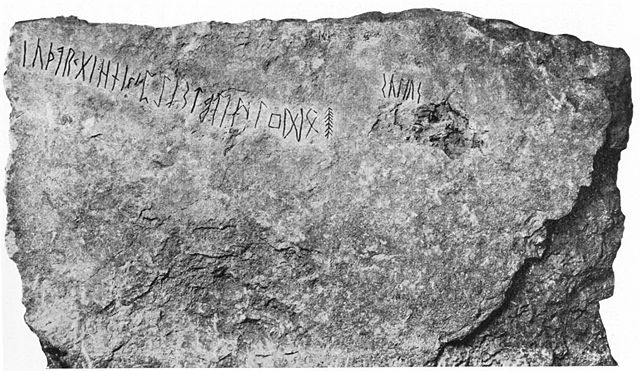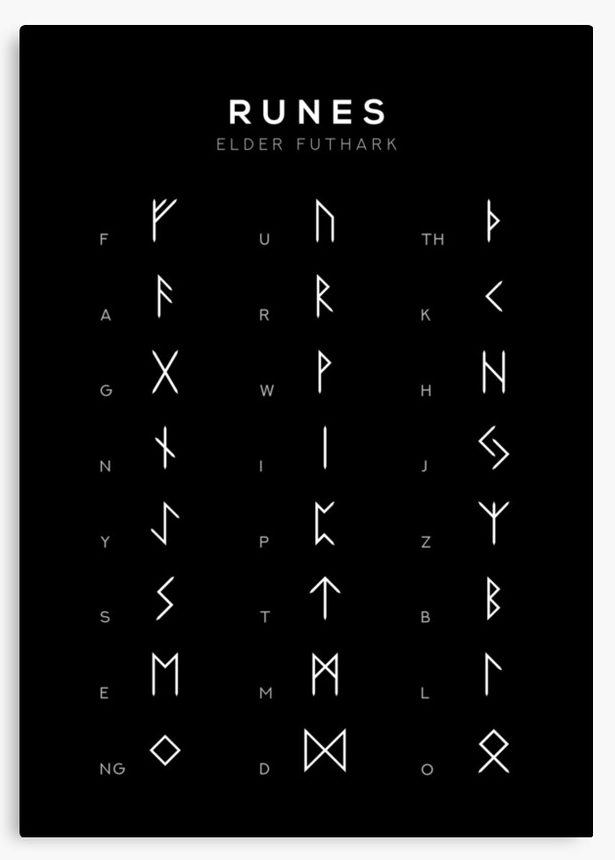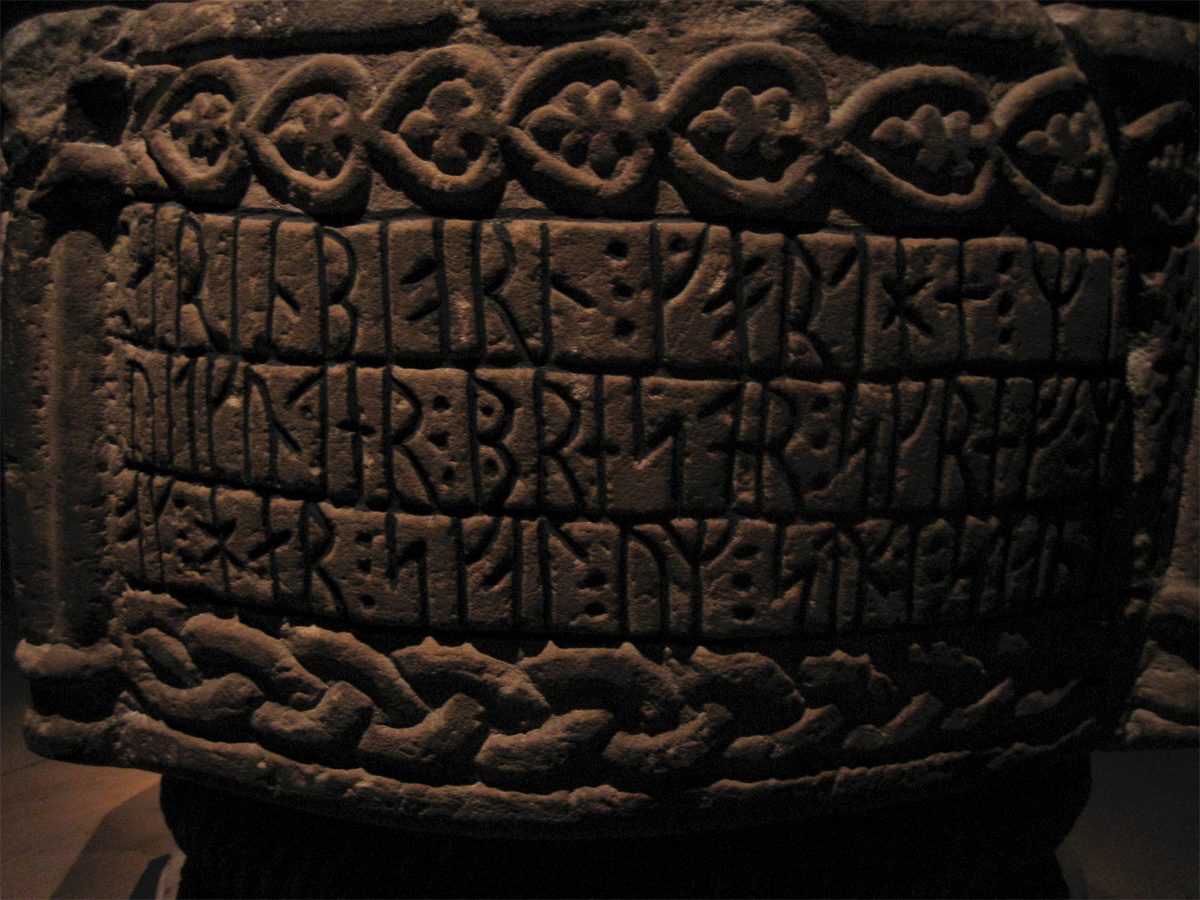Norse runes are a writing system first developed by the Germanic people of Scandinavia. Runic symbols were believed to have mystical powers. Runes evolved as they were shared from culture to culture. The runic alphabet even influenced English letters. Fehu, Othila, Sowilo, and Tiwaz became F, O, S, and T respectively.
Norse runes are an important part of Norse mythology. These magic symbols appeared from the depths of the Well of Urd, also known as the Well of Fate.
The Norns carried the runic symbols up the World Tree Yggdrasil, which held the nine worlds of Old Norse mythology.
What are Norse runes?
The writing system known as runes is an early writing system created by Germanic tribes around 50 AD. These symbols were first carved into wood, then stones. These stones are called runestones.
There are over 6,000 documented runestones in Scandinavia. Despite the attempts of conquerors to spread Christianity throughout Scandinavia, the use of runes continued for centuries.
Today, runes are still used for pagan rituals, and scholars continue to study this writing system said to be given to man by the god Odin.

What culture are runes from?
The Germanic tribes in northern Germany and the Danish area developed the runic writing system in the 1st century AD. These were found on the Kylver runestone in Sweden.

Runes are the earliest known writing system of the Germanic people’s language. As the use of the runic alphabet spread, their written form was adapted.
In Denmark, runic symbols were written with longer lines, known as long-branch form. Sweden and Norway tended to stick with shorter lines, called short-twig form.
The writing medium also influenced which style was used. On stone, long-branch was often preferred, while short-twig was best for wood carvings.
What language are Viking runes (Old Norse runes) written in?
Old Norse runes were written in the Proto-Norse language.
While the runic alphabet remained pretty similar for centuries, each Germanic tribe that used the runes did so in their native language. Since the runic symbols represented things such as a horse, water, or a Norse god, their meaning was universal in Scandinavia.
Like hieroglyphics, pictographs, and even the Native American petroglyphs, the runic alphabet represented specific elements, animals, or gods.
Outside of the literal translation, the meaning could be intuited by a rune-master based on the context and placement of the rune.
For example, Fehu (ᚠ) means “cattle.” This symbol could also be interpreted as wealth or abundance since having cattle was a sign of wealth during the Viking age.
How vital are runes in Norse Mythology?
In Old Norse Mythology, runes were so important that Odin hung himself from the world tree Yggdrasil for nine days and nights just to learn their secrets.
Runes held magical powers, including making Odin’s spear Gungnir hit its mark every time, no matter who threw it.
In the Viking age, warriors would carve runes into their weapons in hopes of making them more powerful and accurate.
Even the world tree Yggdrasil had runes engraved in its trunk. Their meaning remained a mystery in Norse mythology until Odin’s ritual sacrifice of his own life revealed their meaning to him. It is believed that Odin revealed runes to the first human rune-master.
What are Elder Futhark Runes?
Elder Futhark runes are the first known rune-writing system.
The Elder Futhark runic alphabet has 24 symbols, each with its own meaning. The 24 runes are divided into 3 groups of 8 known as aetts.

Aett is Old Norse for “family.” Each family of runes is attributed to gods. The first aett is ruled by twins Freyr and Freya. The 2nd aett is ruled by Mordgud and Hagalaz (Heimdall). The 3rd aett is ruled by Tyr and Ziza.
Elder Futhark runes were used until about 800 AD. Next came the Younger Futhark runes, which lasted from 800-1100 AD. As these two writing systems evolved, Anglo-Saxon Futhorc runes emerged among the Germanic tribes that had migrated toward what is now modern-day England. Anglo-Saxon Futhorc runes were used from 6400-1100 AD.
Like many Old Norse traditions, the names of the runes were immortalized via poetry. The Old English Rune Poem preserved the names of the 24 runes. 5 runes from the Anglo-Saxon Futhorc are also included in the Rune Poem.
The Runic alphabet and meaning behind each symbol
Freyr’s aett
| Rune | Meaning |
| F – Fehu (ᚠ) – Cattle/Wealth | Represents luck, abundance, and wealth. |
| U/V – Uruz (ᚢ) – Aurochs (a now extinct type of cattle) | This rune means power, strength, and courage. It can also symbolize creativity and endurance. |
| TH/þ – Thurisaz/Þurisaz (ᚦ) – Giant/Thor | The rune of strength, defense, protection. Also represents conflict, change, and catharsis. |
| A – Ansuz (ᚨ) – God | References Odin and also stands for wisdom, truth, communication, and inspiration. |
| R – Raido (ᚱ) – Ride/Journey | This rune can also mean wheel, movement, travel, and destiny. |
| C – Kaunan/Cen (ᚲ) – Torch | Means revelation, creativity, fire, and transformation. It can also mean regeneration or illumination |
| G – Gebo (ᚷ) – Gift | This rune represents a gift, whether a physical one or any other definition of the word gift. It can also represent a partnership or love. |
| W – Wunjo (ᚹ) – Joy | Stands for human connection, fellowship, hope, harmony, friendship, and kinship. This rune also means comfort. |
Hagalaz’s aett
| Rune | Meaning |
| H – Hagalaz (ᚺ) – Hail/Precipitation | This rune represents radical changes such as loss, transformation, or the uncontrollable force of nature. |
| N – Naudiz (ᚾ) – Need | Represents necessity, hardship, and endurance. It’s also used to symbolize survival and self-reliance. |
| I – Isaz/Isan (ᛁ) – Ice | This rune represents quieter changes, challenge, stillness, self-control, and concentration. |
| J – Jeran (ᛃ) – Year/Harvest | The rune of peace, rewards for hard work, prosperity, and fruitfulness. |
| Y/æ – Iwaz (ᛇ) – Yew tree/Yggdrasil | Like the fabled world tree that held the nine realms, Eihwaz stands for stability, reliability, and strength. It is the tree of life, eternity, resilience, and longevity. |
| P – Perþō (ᛈ) – Luck | This is the rune of hidden secrets, magic, divination, and mystery. |
| X/Z – Algiz (ᛉ) – Elk/Protection/Defense | This rune gives divine protection, courage, and the energy of the Valkyrie. |
| S – Sowilo (ᛋ) – Sun | Health, energy, mastery, success, wholeness. |
Tyr and Ziza’s aett
| Rune | Meaning |
| T – Tiwaz (ᛏ) – The god Tyr | This rune stands for victory, honor, justice, and balance. It is the symbol of leadership and authority. Tiwaz is the rune of the Viking age warrior. |
| B – Berkanan (ᛒ) – Birch | Symbol for birth, fertility, growth, and fresh starts. |
| E – Ehwaz (ᛖ) – Horse | This rune represents the attributes of a horse and rider–fluid movement, partnership, swiftness, trust, teamwork. It can also mean harmonious relationships. |
| M – Mannaz (ᛗ) – Man | A rune to represent friends, self, and mankind. It can also denote social order, intellect, mind, and memory. |
| L – Laguz (ᛚ) – Water | Means to flow. Also represents the sea, renewal, and dreams. |
| ŋ -Ingwaz (ᛜ / ᛝ) – Ing the god | This rune symbolizes unity and harmony. |
| D – Dagaz (ᛞ) – Day | Means the dawn, awakening, and new challenges or adventures. It can also mean a breakthrough. |
| O – Oþilan/Oþalan (ᛟ) – Heritage/Possession | This is the rune of ancestral possession, home, abundance, inheritance, and legacy. |
Make sure to check my articles on:
Are runes read left to right?
Norse runes are read left to right and right to left. The system is called boustrophedon. This means the direction changes with each line. If line one is left to right, then line two is right to left, and so on.
Because runes also have mystical meanings, they can also be read depending on their position. Three rune layouts represent the past, present, and future.
This means the rune on the left represents the past, the middle represents the present, and the right represents the future. Their position can change the meaning of the rune when read in this fashion.
Are Celtic and Nordic runes the same?
Celtic and Nordic runes have some similarities, but they are not the same writing system.
Both runic alphabets were considered sacred. Additionally, runic inscriptions in Celtic and Nordic cultures were carved into wood and thought to hold magical powers.
Celtic runes are called Oghams. Like Nordic runes, Oghams came from a god (Ogma).

While the two writing systems have similar divine origins and were developed around the same time, Celtic and Nordic runes have no direct connection to each other.
When did the Scandinavian people stop using runes?
The use of runes by the Scandinavian people decreased starting in the 12th century. By the 15th century, most Swedish, Norwegian, and Danish people had ceased using runes entirely.
The tradition of using runes lasted until the 17th century in Iceland and Gotland, Sweden. The isolated people of Alvdalen, Sweden, continued using runes until the 20th century!
As Christianity spread through Scandinavia in the 12th and 13th centuries, runes were gradually replaced by the Latin alphabet. Like many of their traditions, the Scandinavians held onto the runic alphabet tradition long after Christianity was introduced.
Despite the differences between the Germanic tribes of Scandinavia, the Runic alphabet remained largely unchanged. Even as the writing system evolved at the beginning of the Viking age from Elder Futhark to Younger Futhark runes, the runic symbols maintained their importance and power.
The Scandinavian people fought hard to preserve their traditions, even as Christianity extinguished their pagan religions and rituals.

